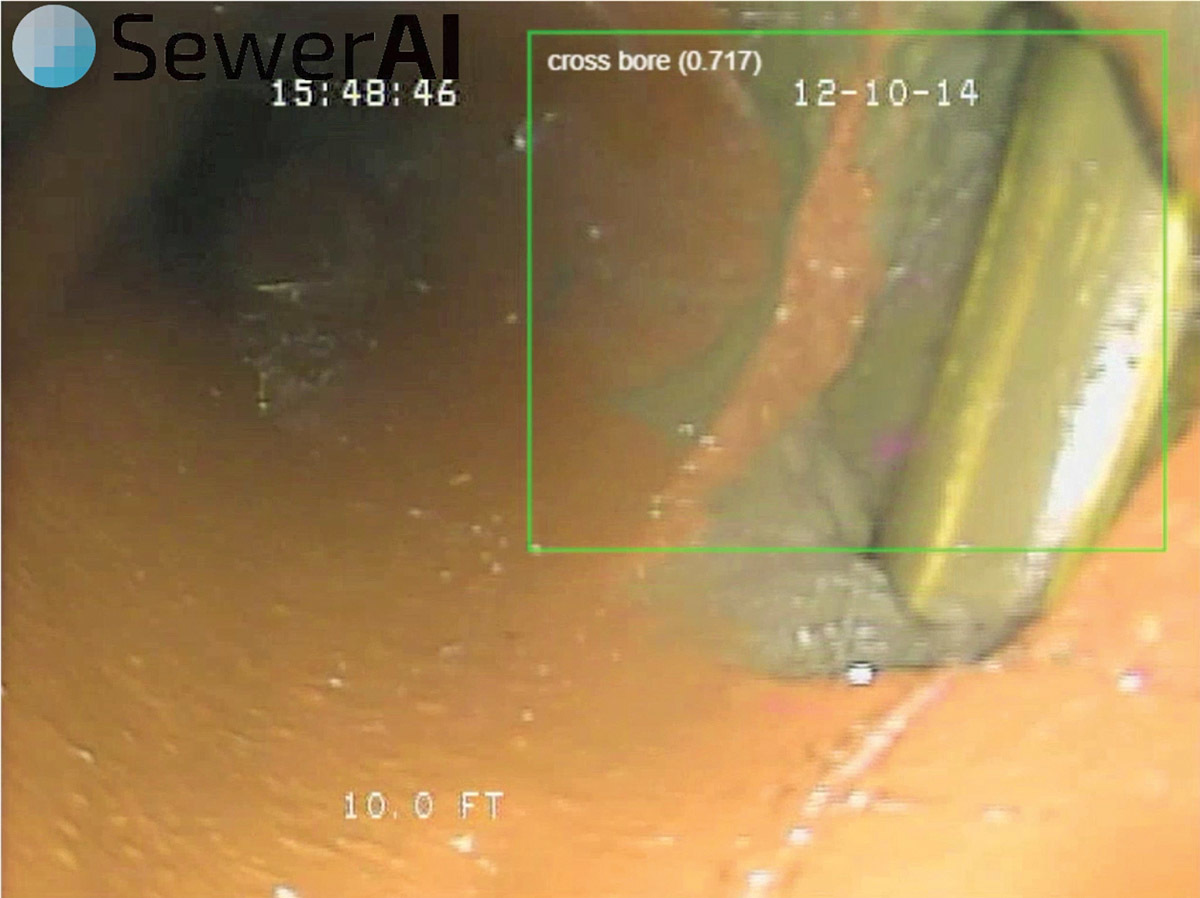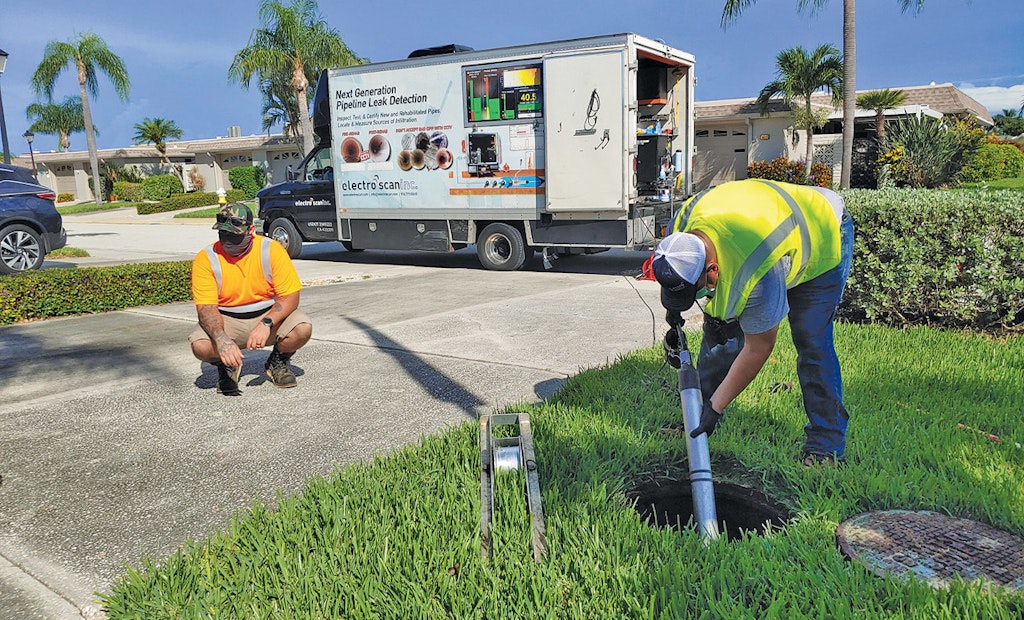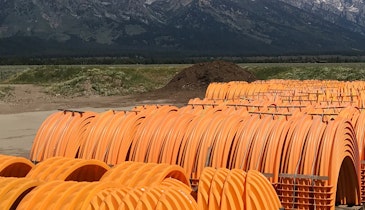Interested in Location/Detection?
Get Location/Detection articles, news and videos right in your inbox! Sign up now.
Location/Detection + Get AlertsElectrode leak location helps Florida utility identify infiltration
Problem:
After spending decades and millions of dollars rehabilitating sewer pipes across its service area, a large coastal Florida utility realized its legacy pipe inspection program was failing to reduce excessive infiltration.
Solution:
The utility engaged Electro Scan to perform a Focused Electrode Leak Location pipe inspection program, comparing equal lengths of 50-year-old unlined vitrified clay pipe, newly lined cured-in-place pipe, and 15-year-old CIPP liners to evaluate its efficacy to support improved rehabilitation strategies.
Result:
Remarkably, the 50-year-old unlined VCP performance for controlling I&I was two and one-half times greater than the newly rehabilitated CIPP liners. This single finding resulted in an immediate priority to inspect all remaining VCP to identify which pipes do and do not require further attention at this time. The cost avoidance benefit of this alone will exceed several million dollars. A side-by-side comparison was also performed between FELL and legacy CCTV inspection results. By stark contrast, FELL documented 1,188 individual infiltration defects, compared to just 34 defects identified by CCTV inspection. More importantly, FELL inspection found 74% of customer taps were defective, compared to only 3% seen using CCTV inspection. 800-975-6149; www.electroscan.com.

Municipality conducts two studies to determine value on AI
Problem:
Two CCTV sewer inspection projects similar in scope in Silicon Valley, California, were carried out by a municipal services contractor one year apart. Both projects required cleaning and CCTV inspection of 6- to 12-inch VCP sanitary and combined sewer mainlines, and they were carried out primarily by the same individuals using the same vehicle chassis outfitted with the same type of robotic CCTV systems.
Solution:
The intent was to study what’s made possible through an AI technology called AutoCode from SewerAI, which automatically recognizes pipe conditions in CCTV sewer data. When AutoCode predicts a condition in a CCTV image, it brackets that part of the image and assigns a detailed label, logging the predicted condition and its distance in the pipe. The output is then reviewed by an industry-certified analyst to create a final condition assessment report. To compare these two methods, and to see if there could be both a cost savings and improvement in efficiency through the use of AI, SewerAI documented daily production (in total linear feet inspected) for each crew, for each day, for both projects, with Project A being completed using the traditional manual real-time data entry method, and with Project B being completed using the new AI-enabled workflow where operators did not manually enter data during the inspections.
Result:
A 98.95% increase in production when implementing the AutoCode-enabled workflow in the field. On Project A, crews yielded a daily average of 1,352 linear feet inspected per day. Project B produced a daily average of 2,691 linear feet per day. 855-952-2200; www.sewerai.com.






